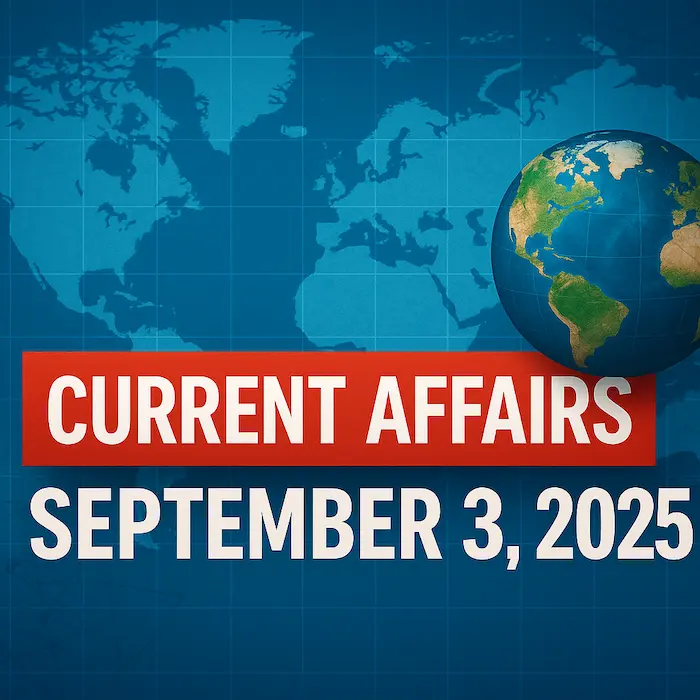1. Decoding India’s Cancer Map – Health
Why in News?
A recent analysis from 43 population-based cancer registries across India highlights a growing cancer burden. As per the report:
- Lifetime risk of developing cancer in India is 11%.
- In 2024, India reported 15.6 lakh new cancer cases and 8.74 lakh deaths.
- The study uses data from 2015–2019 and offers insights into regional disparities, gender trends, and cancer types, aiding in evidence-based health policy and planning.
Key Highlights of the Report
1. Regional and Gender Disparities
- Women account for 51.1% of total cancer cases but only 45% of deaths, due to higher detection rates of breast and cervical cancers.
- Oral cancer is now the most common cancer in men, overtaking lung cancer.
2. Northeast India: A Cancer Hotspot
- The highest cancer incidence rates in India are reported from the Northeast states.
- Contributing factors:
- High tobacco use (both smoked and smokeless)
- Risky dietary practices (e.g., fermented foods, smoked meats)
- High prevalence of carcinogenic infections
3. Geographical Variation in Cancer Types
- Breast cancer highest in Hyderabad
- Cervical cancer more common in Aizawl
- Variation requires region-specific health interventions
National Response and Policy Significance
- The Indian government has launched National Programme for Prevention and Control of Cancer, Diabetes, Cardiovascular Diseases and Stroke (NPCDCS).
- Emphasis on:
- Early detection and screening (especially for breast and cervical cancers)
- HPV vaccination for cervical cancer prevention
- Health infrastructure strengthening, particularly in high-incidence regions
- Awareness campaigns and community engagement
Exam Connect – Possible Questions
Prelims
1. Which of the following cancers is currently the most common among Indian men, as per recent cancer registry data?
A. Lung Cancer
B. Oral Cancer
C. Colorectal Cancer
D. Stomach Cancer
Answer: B. Oral Cancer
2. The high incidence of cancer in Northeast India is attributed to which of the following?
1.Tobacco use
2. Risky dietary habits
3. High altitude
4. Carcinogenic infections
Select the correct answer using the code below:
A. 1 and 2 only
B. 1, 2 and 4 only
C. 1 and 4 only
D. All of the above
Answer: B. 1, 2 and 4 only
Mains
1. India’s cancer burden reveals deep regional and gender disparities. Discuss the key findings of the latest cancer registry report and suggest strategies to address the growing cancer burden in India.
2. Despite a reduction in tobacco use, oral cancer cases are on the rise in India. Analyze the factors responsible for this trend and recommend policy-level interventions to control oral cancer.
2. Noise Pollution is Rising but Policy is Falling Silent – Environment
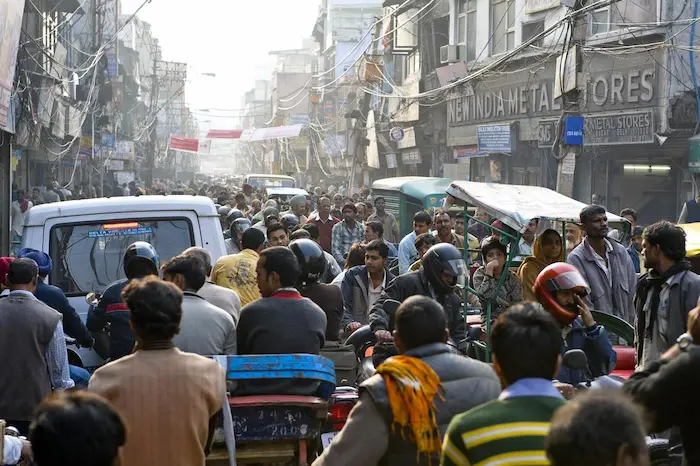
Why in News?
Noise pollution in Indian cities has become an urgent environmental and public health issue, especially in sensitive zones like schools and hospitals. Despite legal frameworks and monitoring networks, enforcement is weak, and public apathy persists. The problem contradicts constitutional rights to life and dignity under Article 21, highlighting a growing gap between policy and implementation.
Key Highlights
1. Alarming Noise Levels in Cities
- Urban areas consistently record sound levels above permissible limits, especially in:
- Silence zones (hospitals, schools, courts)
- Commercial and residential areas
- The World Health Organization (WHO) recommends ambient noise levels not exceeding 55 dB during the day and 40 dB at night, but these are often breached.
2. Weak Monitoring and Enforcement
- The National Ambient Noise Monitoring Network (NANMN) was launched by CPCB in 2011.
- Issues include:
- Poor placement of sensors
- Data not linked to actionable governance
- Lack of transparency and citizen engagement
- Issues include:
3. Constitutional and Legal Framework
- Article 21 of the Constitution ensures the right to life with dignity, which includes freedom from excessive noise.
- Noise Pollution (Regulation and Control) Rules, 2000 exist but are rarely enforced effectively.
- Courts have recognized noise pollution as a violation of fundamental rights, yet implementation lags.
4. Ecological and Biodiversity Impacts
- Birds and wildlife rely on sound for communication, mating, and navigation.
- Urban noise disrupts these patterns, leading to:
- Reduced species richness and biodiversity
- Altered urban ecosystem dynamics
5. Civic Apathy and Governance Gaps
- Public normalization of loud noise (from construction, traffic, religious events, etc.) contributes to:
- Weak civic pressure on municipalities
- Inconsistent enforcement by local authorities
- The issue is politicized or neglected due to lack of awareness and public engagement.
Way Forward: Reforms and Recommendations
- Decentralized noise monitoring with real-time data shared publicly
- Link monitoring systems with local-level enforcement mechanisms
- Incorporate noise regulation in urban planning and zoning laws
- Promote civic education campaigns on noise impacts
- Implement ‘quiet zones’ effectively with strict penalties
- Recognize noise pollution as a public health emergency, not just an environmental concern
Exam Connect – Possible Questions
Prelims
1. Which of the following is responsible for implementing the National Ambient Noise Monitoring Network (NANMN)?
A. Ministry of Health and Family Welfare
B. Central Pollution Control Board
C. Ministry of Urban Affairs
D. National Green Tribunal
Answer: B. Central Pollution Control Board
2. According to WHO guidelines, what is the recommended maximum noise level in residential areas at night?
A. 55 dB
B.45 dB
C. 40 dB
D. 35 dB
Answer: C. 40 dB
Mains
1. Noise pollution in Indian cities represents both a governance failure and a public health crisis. Examine the causes, consequences, and policy shortcomings, and suggest a roadmap for reform.
2. Discuss how noise pollution affects urban biodiversity and ecological systems. In your opinion, how can noise management be integrated into India’s urban planning framework?
3. RTE Act and Minority Educational Institutions – Polity
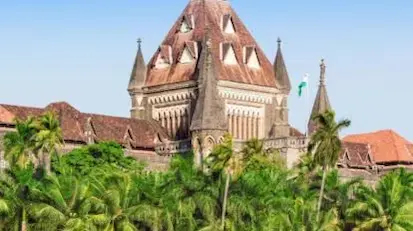
Why in News?
The Supreme Court has referred to a larger constitutional bench the question of whether Minority Educational Institutions (MEIs) are completely exempt from the provisions of the Right to Education (RTE) Act, 2009.
This issue has major implications for the balance between fundamental rights, autonomy of minority institutions, and state responsibilities in delivering equitable education.
Key Issues Under Judicial Review
- Can MEIs be compelled to follow RTE provisions like 25% reservation for disadvantaged students?
- Does enforcing such provisions violate the constitutional autonomy guaranteed to minorities under Article 30(1)?
- How should India balance the right to education (Article 21A) with minority rights (Articles 29 & 30)?
Constitutional Provisions Involved
| Article | Provision |
|---|---|
| Article 21A | Free and compulsory education for children aged 6–14 years |
| Article 29 | Protection of interests of minorities |
| Article 30(1) | Right of minorities to establish and administer educational institutions |
Legal & Institutional Framework
Right to Education (RTE) Act, 2009
- Enacted to operationalize Article 21A (added by 86th Constitutional Amendment, 2002).
- Key Provisions:
- Free and compulsory education for all children aged 6–14
- 25% reservation in private unaided schools for weaker sections
- No detention policy up to Class VIII (partially modified in 2019)
- Establishment of School Management Committees (SMCs)
- Prohibits private tuition by school teachers
- Mandates TET-qualified teachers
National Commission for Minority Educational Institutions (NCMEI) Act, 2004
- Regulates recognition and autonomy of MEIs
- Handles disputes regarding minority status and rights of institutions
Judicial Precedents
T.M.A. Pai Foundation vs. State of Karnataka (2002)
- Minority status is determined at the state level
- Minority institutions have the right to admit students from their community and retain administrative autonomy
Unnikrishnan vs. State of Andhra Pradesh (1993)
- Declared education a Fundamental Right under Article 21
Recognized Minorities (under NCMEI Act)
The Government of India recognizes the following as religious minorities:
- Muslims
- Christians
- Sikhs
- Buddhists
- Jains
- Zoroastrians (Parsis)
Tensions Between RTE and Minority Rights
- MEIs argue that RTE’s provisions (especially 25% reservation) infringe on their autonomy to admit students of their own community.
- However, child rights activists argue that universal education access should override institutional preferences.
- The issue reflects a conflict between group rights and individual rights within the Indian constitutional framework.
Current Status
- The Supreme Court has referred the matter to a larger Bench due to constitutional importance.
- A future ruling will likely clarify the extent to which MEIs must comply with RTE mandates.
Exam Connect – Possible Questions
Prelims
1. Which of the following Articles of the Indian Constitution grants religious and linguistic minorities the right to establish and administer educational institutions of their choice?
A. Article 15
B. Article 21A
C. Article 29
D. Article 30(1)
Answer: D. Article 30(1)
2. Which of the following communities is not currently recognized as a religious minority by the Government of India?
A. Parsis
B. Buddhists
C. Jains
D. Jews
Answer: D. Jews
Mains
1. Discuss the constitutional and legal tensions between the Right to Education (RTE) Act, 2009, and the rights of Minority Educational Institutions under Articles 29 and 30. How can this conflict be resolved in a democratic and plural society like India?
2. Examine the significance of the Supreme Court’s referral of the MEI-RTE issue to a larger Bench. How does this case reflect the challenges of balancing individual rights with community rights in India’s educational governance?
4. Samagra Shiksha Abhiyan: Integrated Approach to School Education – Indian Society
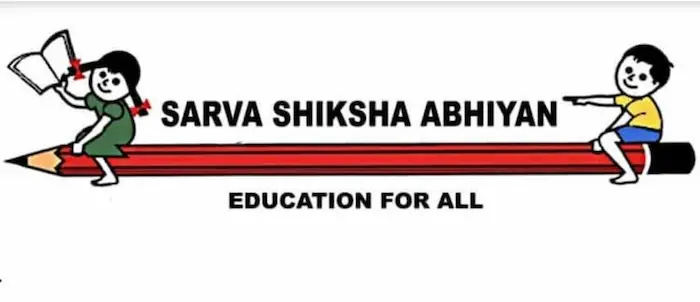
Why in News?
The Supreme Court has intervened in a financial dispute over the Samagra Shiksha Abhiyan (SSA).
- The Tamil Nadu government faces reimbursement dues exceeding ₹3,000 crore to private schools for admitting students from economically disadvantaged backgrounds.
- The Centre has declined to share the financial burden, triggering legal proceedings.
This brings attention to the governance and funding challenges within the Samagra Shiksha framework.
What is Samagra Shiksha Abhiyan (SSA)?
Launched in 2018, Samagra Shiksha Abhiyan is a flagship education scheme by the Ministry of Education (formerly HRD Ministry), aimed at unifying multiple school education programs under one umbrella.
Integrated Schemes under SSA:
- Sarva Shiksha Abhiyan (SSA) – Elementary education (Classes I–VIII)
- Rashtriya Madhyamik Shiksha Abhiyan (RMSA) – Secondary education (Classes IX–X)
- Teacher Education (TE) – Training and professional development of teachers
Key Objectives
- Ensure equitable access to quality education from pre-primary to Class XII
- Remove administrative silos by integrating programs
- Promote inclusive education, digital learning, and vocational skills
- Strengthen teacher capacity and school infrastructure
- Improve Foundational Literacy and Numeracy (FLN) in early grades
Funding Mechanism
| Category of State | Centre:State Funding Ratio |
|---|---|
| General States | 60:40 |
| North Eastern & Hilly States | 90:10 |
| Union Territories | 100% Central Funding |
- Implementation is managed by a Single State Implementation Society (SIS) in each state.
Samagra Shiksha 2.0 (2021–2026)
An enhanced version of the original scheme, aligned with the National Education Policy (NEP) 2020.
Key Focus Areas:
- Digital education & ICT
- Vocational education for secondary-level students
- Inclusive education for children with special needs (CWSN)
- Physical education, soft skills, and life skills via integration with Khelo India
- Strengthening early childhood education in collaboration with Anganwadis
Funding Outlook:
- Over ₹41,000 crore allocated until March 2026
- Coverage of 1.16 million schools, 156 million students, and 5.7 million teachers
Governance and Challenges
- The scheme is facing inter-governmental disputes over financial responsibilities, especially related to private school reimbursements under the 25% reservation mandate of the RTE Act.
- Such disputes may undermine educational access for disadvantaged groups and delay scheme outcomes.
- Need for a robust grievance redressal and coordination mechanism between Centre and States.
Exam Connect – Possible Questions
Prelims
1. Samagra Shiksha Abhiyan integrates which of the following schemes?
1.Sarva Shiksha Abhiyan (SSA)
2.Mid-Day Meal Scheme
3.Rashtriya Madhyamik Shiksha Abhiyan (RMSA)
4.Teacher Education (TE)
Select the correct answer:
A. 1, 2 and 3
B. 1, 3 and 4
C. 2 and 4 only
D. 1, 2, 3 and 4
Answer: B. 1, 3 and 4
2. What is the Centre-State funding ratio for Samagra Shiksha Abhiyan in North Eastern and Himalayan states?
A. 60:40
B. 50:50
C. 75:25
D. 90:10
Answer: D. 90:10
Mains
1. Samagra Shiksha Abhiyan represents a major step toward integrating India’s school education system. Discuss the objectives and components of the scheme, and critically examine the challenges in its implementation.
2. How does Samagra Shiksha Abhiyan align with the goals of the National Education Policy (NEP) 2020? Examine its role in promoting inclusive and equitable quality education in India.
5. Understanding River Dynamics: Why Some Rivers Remain Single While Others Split – Geography
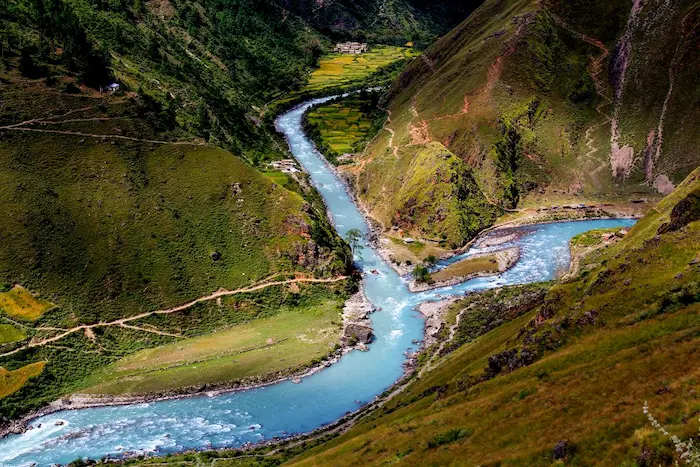
Why in News?
A new study by the University of California, Santa Barbara (UCSB) offers insights into a critical geographical and environmental question:
Why do some rivers maintain a single-channel course while others evolve into braided, multi-channel systems?
The study, based on satellite data spanning 36 years and 84 rivers, provides significant implications for flood management, river restoration, and climate-resilient water governance — especially relevant in countries like India with dynamic river systems.
Key Highlights of the Study
Main Finding: Erosion, Not Equilibrium
- Rivers do not split because they reach equilibrium.
- Braided or multi-thread rivers occur when erosion exceeds sediment deposition, leading to instability and lateral widening.
- In contrast, single-thread rivers maintain a dynamic balance between bank erosion and sediment supply, preserving a narrow and stable course.
Types of Rivers Based on Channel Behavior
| Type of River | Characteristics | Examples |
|---|---|---|
| Single-thread River | – Stable, narrow channel – Balance between erosion and deposition | Most Himalayan rivers during lean flow |
| Multi-thread / Braided River | – Multiple shallow channels – High erosion and sediment load – Unstable banks | Brahmaputra River, Kosi River |
Scientific Methodology
- Researchers used Particle Image Velocimetry (PIV) on satellite imagery.
- Over 400,000 measurements of bank erosion and deposition were recorded across diverse climatic zones.
- This quantitative approach gives a high-resolution understanding of riverbank dynamics.
Role of Vegetation in River Morphology
- Vegetation impacts riverbank stability and bend migration.
- Dense vegetation slows down erosion, encouraging single-channel formation.
- Sparse or degraded vegetation (often due to human activity) promotes braiding and channel instability.
Indian Context & Examples
- Brahmaputra River:
- One of the most braided rivers in the world.
- Known for frequent floods, bank erosion, and sediment overload.
- Ganga River:
- Generally maintains a single-thread channel in the middle reaches, but can become braided near floodplains.
- Human interventions (e.g., damming, deforestation, sand mining) alter river dynamics, increasing flood risks.
Implications for India
Flood Management
- Accurate understanding of riverbank behavior enables better flood prediction and control.
- Helps in zoning regulations, embankment planning, and early warning systems.
River Restoration & Conservation
- Natural solutions like riparian afforestation, wetland restoration, and sediment management can stabilize rivers.
- Supports biodiversity conservation and climate adaptation in ecologically sensitive zones.
Climate Change Adaptation
- As extreme weather events intensify, rivers are more likely to shift channels or split, raising the risk of disasters.
- Understanding river dynamics is key to building resilient infrastructure and adaptive land use planning.
Exam Connect – Possible Questions
Prelims
1. What is the primary reason some rivers evolve into braided (multi-thread) channels according to recent research?
A. Sudden increase in rainfall
B. Bank equilibrium
C. Excessive erosion over deposition
D. Tectonic uplift
Answer: C. Excessive erosion over deposition
2. Which of the following rivers in India is a prominent example of a braided river system?
A. Narmada
B. Godavari
C. Brahmaputra
D. Mahanadi
Answer: C. Brahmaputra
Mains
1. Discuss the geomorphological factors that determine whether a river follows a single-thread or braided course. What are the implications of river braiding for flood management and riverine ecology in India?
2. With reference to recent scientific studies on river dynamics, analyze the impact of human activities on the stability of Indian rivers. Suggest sustainable measures for river conservation in the context of climate change.
6. Bond Market in India – Rising Bond Yields Amid RBI Rate Cuts – Economy
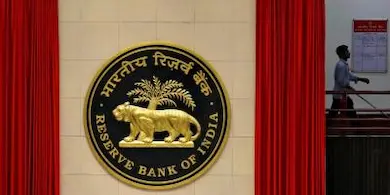
Why in News?
India’s 10-year benchmark government bond yield has risen by ~26 basis points in the past month, even though the RBI has reduced the repo rate by 100 basis points over the last seven months.This divergence indicates growing investor concerns related to inflation, fiscal risks, and the government’s borrowing needs, making the bond market a critical focus in India’s macroeconomic landscape.
Key Takeaways
- Rising bond yields signal investor mistrust in monetary easing, driven by inflationary pressures and fiscal uncertainty.
- Indicates a possible disconnect between RBI’s monetary policy and market sentiment.
- Highlights the complex interplay between inflation expectations, government borrowing, and interest rate trends.
Understanding the Bond Market in India
What is a Bond?
A bond is a fixed-income instrument representing a loan from an investor to a borrower (government or corporation), with a promise to repay the principal with periodic interest (coupon).
Importance of the Bond Market
| Function | Explanation |
|---|---|
| Government Financing | Bonds fund infrastructure projects like roads, hospitals, and defense. |
| Corporate Funding | Companies issue bonds to raise capital for expansion and manage debt. |
| Benchmark for Interest Rates | Bond yields affect bank loan rates and overall credit availability. |
| Investor Portfolio Diversification | Bonds are considered safer than equities and provide steady returns. |
Types of Bond Markets
| Market | Description |
|---|---|
| Primary Bond Market | New bonds are issued directly by the government or companies to investors. |
| Secondary Bond Market | Previously issued bonds are traded; yields fluctuate based on market forces. |
Key Types of Bonds in India
| Type of Bond | Issuer | Purpose |
|---|---|---|
| Government Bonds (G-Secs) | Central Government | Long-term borrowing |
| Treasury Bills (T-Bills) | Central Government | Short-term borrowing (≤1 year) |
| State Development Loans (SDLs) | State Governments | State-level projects |
| Municipal Bonds | Urban Local Bodies | Urban infrastructure (e.g. water supply, roads) |
| Corporate Bonds | Private/PSUs | Business expansion or refinancing debt |
Why Are Bond Yields Rising Despite RBI Rate Cuts?
1. Inflation Concerns
- Rising food and fuel prices raise inflation expectations, leading investors to demand higher yields to offset purchasing power loss.
2. High Government Borrowing
- A large borrowing programme increases supply of government securities, leading to falling bond prices and rising yields.
3. Global Economic Uncertainty
- Global bond markets are reacting to tightening monetary policies in developed economies, influencing Indian yields.
4. Fiscal Risk & Fiscal Deficit
- Widening fiscal deficit and slow disinvestment raise concerns over fiscal discipline, pushing bond yields higher.
Implications for the Indian Economy
| Area | Impact |
|---|---|
| Monetary Policy Transmission | Rising bond yields may delay transmission of RBI rate cuts to borrowers. |
| Government Borrowing Cost | Higher yields increase interest burden on public debt. |
| Private Investment | Costlier bonds crowd out private sector borrowing, slowing investment. |
| Stock Market | Rising yields may cause capital outflows from equity to debt. |
Way Forward
- The government needs to balance fiscal consolidation with growth spending.
- RBI must anchor inflation expectations while enhancing liquidity transmission.
- Developing a vibrant corporate bond market can reduce reliance on government securities.
- Policy coordination between RBI and Ministry of Finance is crucial for market stability.
Exam Connect – Possible Questions
Prelims
1. Which of the following best explains a rise in bond yields in the secondary market?
A. Bond prices are increasing
B. Interest rates are falling
C. Bond prices are falling
D. Government is repurchasing bonds
Answer: C. Bond prices are falling
2. In India, which of the following are types of government-issued bonds?
1. Treasury Bills
2.State Development Loans
3.Municipal Bonds
Select the correct answer using the code below:
A. 1 and 2 only
B. 2 and 3 only
C. 1 and 3 only
D. 1, 2 and 3
Answer: D. 1, 2 and 3
Mains
1. Despite a series of repo rate cuts by the RBI, bond yields in India are rising. Examine the causes behind this trend and its implications for the Indian economy.
2. Discuss the structure and significance of the bond market in India. What reforms are needed to deepen the bond market and enhance financial stability?
7. NASA–ESA Solar Orbiter Mission: Unlocking the Secrets of the Sun – Science & Technology
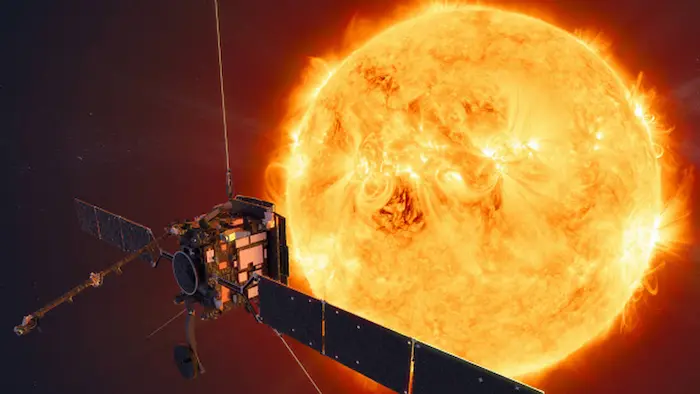
Why in News?
The NASA–ESA Solar Orbiter Mission has recently identified the origins of Solar Energetic Electrons (SEE).This discovery advances our understanding of solar activity, including solar flares, coronal mass ejections (CMEs), and their impact on space weather and Earth’s infrastructure.
Key Highlights of the Mission
- Launched in February 2020 aboard an Atlas V rocket from Cape Canaveral, Florida.
- Joint mission by NASA and the European Space Agency (ESA).
- Budget: Approx. $1.5 billion.
- Designed to approach the Sun closer than any other spacecraft, using gravity assists from Earth and Venus.
Primary Objectives
- Study origins of solar wind and high-energy particles.
- Investigate solar cycle variability and magnetic field evolution.
- Identify sources of solar flares and CMEs, improving early-warning capabilities.
- Observe the Sun’s poles, a region poorly studied by earlier missions.
Key Discovery: Solar Energetic Electrons (SEE)
- Solar Energetic Electrons are high-energy particles released by:
- Solar flares
- Coronal Mass Ejections (CMEs)
- These electrons travel across the heliosphere, impacting satellites, astronauts, and Earth-based systems.
- From 2020–2022, over 300 SEE bursts were detected.
- Findings reveal that SEE release is not instantaneous and may be delayed by turbulence in the interplanetary medium, complicating predictions.
Scientific Instruments Onboard
- EUI (Extreme Ultraviolet Imager) – images the solar surface.
- SPICE – studies solar composition and dynamics.
- EPD (Energetic Particle Detector) – measures solar particles like SEEs.
- Solar Orbiter Heliospheric Imager – tracks solar wind and CME propagation.
- Magnetometer (MAG) – measures solar magnetic fields.
Why It Matters: Space Weather and Earth
What is Space Weather?
Conditions in space (especially near Earth) that result from solar activity – solar flares, CMEs, and high-energy particle bursts.
Potential Impacts of a Major Solar Storm:
| Effect | Impact |
|---|---|
| GPS Failures | Disruption in navigation systems |
| Power Grid Failures | Possible transformer burnout & blackouts |
| Communication Breakdown | Shortwave radio and satellite communications interrupted |
| Satellite Damage | Orbit disturbance and electronics malfunctions |
| Increased Auroras | Visible at lower latitudes |
| Human Spaceflight Risks | Increased radiation exposure to astronauts |
Note: Solar storms *do not directly cause tsunamis or forest fires – such claims are scientifically inaccurate.
Long-Term Significance
- The Solar Orbiter Mission will enhance solar storm forecasting models, which is essential for:
- Protecting critical infrastructure
- Mitigating airline and satellite communication risks
- Ensuring astronaut safety on deep space missions
Exam Connect – Possible Questions
Prelims
1. Which of the following is NOT a direct effect of a major solar storm on Earth?
A. GPS signal disruption
B. Power grid failures
C. Increase in auroral activity
D. Occurrence of tsunamis
Answer: D. Occurrence of tsunamis
2. Solar Energetic Electrons (SEE), recently studied by the Solar Orbiter Mission, primarily originate from:
A. Asteroid collisions
B. Solar flares and CMEs
C. Earth’s ionosphere
D. Cosmic rays from distant galaxies
Answer: B. Solar flares and CMEs
Mains
1. The NASA–ESA Solar Orbiter Mission marks a significant leap in understanding solar activity and space weather. Discuss its scientific objectives and implications for Earth-based technological infrastructure.
2. What are Solar Energetic Electrons (SEE), and why is their study important in the context of climate resilience and space exploration? Illustrate with reference to recent findings from the Solar Orbiter Mission.

